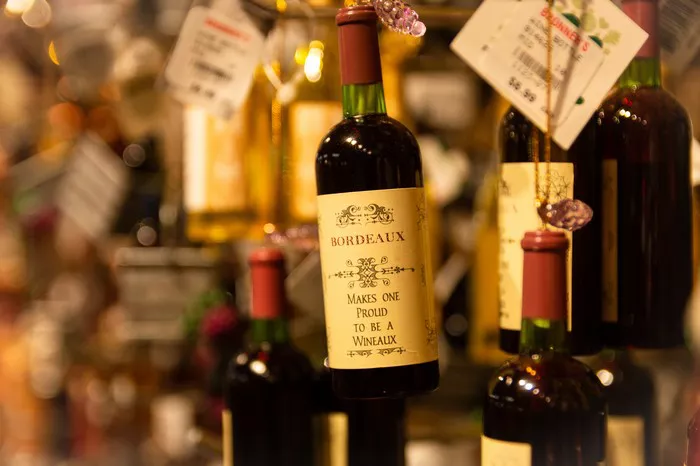Merlot, a renowned red wine varietal, sparks a debate among oenophiles regarding its optimal serving temperature. Enthusiasts often find themselves divided over whether Merlot should be served chilled or at room temperature. This discourse is essential in understanding the nuances that influence the drinking experience and the sensory profile of this beloved wine.
Understanding Merlot: A Brief Overview
Merlot, stemming from the Bordeaux region of France, stands as one of the world’s most popular red wine grapes. Its name, derived from the French word “merle,” meaning blackbird, alludes to the grape’s dark blue color. Merlot grapes are revered for producing wines known for their approachability, softness, and fruit-forward characteristics.
The Influence of Temperature on Wine
Temperature significantly impacts the sensory perception and overall experience of wine. It affects a wine’s aroma, taste, and texture. The debate on whether Merlot should be served chilled or at room temperature stems from the varying effects temperature has on the wine’s flavor profile.
Chilled Merlot: Exploring the Experience
Serving Merlot at a slightly chilled temperature, typically around 55-60 degrees Fahrenheit (12-15 degrees Celsius), can present a distinct tasting experience. Cooling the wine enhances its fruitiness, making the flavors more vibrant and refreshing. The chill helps to subdue the tannins, making the wine smoother on the palate and reducing any bitterness.
Room Temperature Merlot: Tradition vs. Perception
Traditionally, red wines were served at room temperature, but this standard can vary significantly depending on the room’s temperature. The ideal “room temperature” for serving red wine is around 60-68 degrees Fahrenheit (15-20 degrees Celsius). At this temperature range, the wine’s complexity and depth can be fully appreciated, allowing its aromas and flavors to develop more prominently.
Merlot’s Ideal Serving Temperature: Finding the Balance
Determining the perfect serving temperature for Merlot often involves finding a balance between chilled and room temperature. Deviating from the extremes and aiming for a temperature slightly below room temperature, around 60 degrees Fahrenheit (15 degrees Celsius), could be the sweet spot for many Merlot enthusiasts.
Factors Influencing Serving Temperature
Several factors come into play when deciding the appropriate temperature to serve Merlot. These include the wine’s age, personal preferences, food pairings, and environmental conditions.
Age of the Merlot: A Deciding Factor
The age of the Merlot significantly influences its ideal serving temperature. Younger Merlots generally benefit from being served slightly chilled, as this temperature helps highlight their fruity and vibrant characteristics. On the other hand, older Merlots, with their increased complexity and depth, might be better enjoyed closer to room temperature to fully appreciate their nuances.
Personal Preferences in Temperature Selection
The debate on serving temperatures is highly subjective, as personal preferences play a pivotal role. Some individuals might favor the refreshing and lively attributes brought out by chilled Merlot, while others might lean towards the complexity and depth that room temperature provides.
Food Pairings and Temperature Synergy
Pairing Merlot with different foods can also influence the ideal serving temperature. Lighter dishes, such as salads, seafood, or appetizers, often complement chilled Merlot, as the cooler temperature of the wine complements the lighter flavors of the food. Heartier meals, like red meats or stews, might harmonize better with Merlot served closer to room temperature, as it complements the richness and robustness of the dishes.
Environmental Conditions Impacting Serving Temperature
Environmental conditions, such as the ambient temperature of the room or the climate of the region, can affect the serving temperature of Merlot. In warmer climates, serving Merlot slightly cooler can be more refreshing and enjoyable, while in colder climates, room temperature might be more suitable to fully experience the wine’s nuances.
Expert Opinions and Recommendations
Wine experts and sommeliers often provide guidance on serving temperatures for various wines, including Merlot. While opinions may differ, many professionals suggest a temperature range rather than a fixed degree, emphasizing the importance of personal preferences and experimentation.
Conclusion: Embracing Versatility in Serving Merlot
In the ongoing debate of “is Merlot served chilled,” the answer isn’t definitive but rather lies within the spectrum of preferences, contexts, and experiences. The versatility of Merlot allows for exploration and experimentation, inviting enthusiasts to discover their ideal serving temperature based on personal tastes, food pairings, and environmental factors.
Whether enjoyed slightly chilled to enhance its fruity notes or at room temperature to savor its complexity, Merlot’s diverse characteristics cater to a wide array of palates. Embracing this variability can lead to a deeper appreciation and enjoyment of this celebrated red wine, regardless of the serving temperature chosen.


